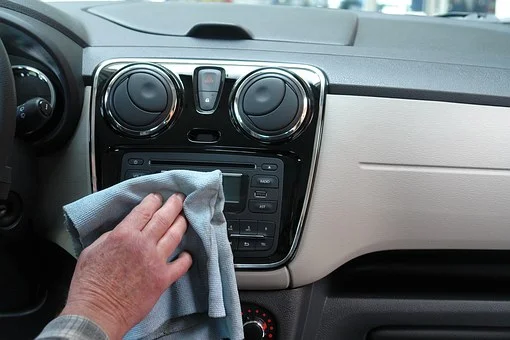When someone in your family is sick, do you spend lots of time cleaning the interior of your home frantically, trying to eliminate germs so as not to make other family members ill? You might not have thought about this, but you should do the same with the interior of your vehicle. Even if a family member or other passenger who routinely rides in your car (or yourself) is not ill, keeping the interior of your car germ-free is important. Here, we will examine the best ways to clean the interior of your car.
A study conducted by the Healthy House Institute found 10 different types of mold in the interior of automobiles. The lower the temperature of the area in which the car is housed, the greater the likelihood of mold. Interestingly, they discovered that married people had more bacteria in their cars than single people; females had more bacteria in their cars than males; and, not surprisingly, cars that routinely carry children had more bacteria than cars without kids.
Clean the Cup Holder
The car’s cup holder is a breeding ground for germs – especially if it contains deep, hard-to-reach crevices. If your regular cleaning wipe or rag does not reach all of them, try using a Q-tip that has been dipped into a cleaning solution. Some of the cup holders in newer vehicles are removable, making it much easier to clean them. If this is the case, bring the cup holder into your home and run it through the dishwasher (top rack only) to disinfect it and remove germs and bacteria.
Disinfect the Steering Wheel
Your steering wheel should routinely be disinfected, whether or not drivers have been sick. Think of all of the germs that live on your hands and are transferred to your steering wheel on a daily basis. A clean rag with interior car cleaning solution, or disinfectant wipes, can be used to wipe the steering wheel down well.
Window and Door Levers
Use car interior cleaner or a household hard surface cleaner with a clean rag to clean your window handles, door levers and anything plastic on your doors. These areas receive much contact from hands and are therefore a common spot for germs and bacteria to grow.
Dashboard
You should also wipe the dashboard down with an interior auto cleaner and clean rag, disinfectant wipes or a household hard surface cleaner and a clean rag. The dashboard can become a catchall for germs and bacteria, which, of course, can’t be seen with the naked eye.
Seat Belts and Radio Controls
Don’t forget to wipe down seat belts and your radio controls. You can use a clean rag with car interior cleaner or household disinfectant on these as well. As they receive a lot of handling from drivers and passengers, seat belts and radio controls contain many germs and bacteria.
Food and Beverage Spills
If you have had food or beverages in your car and they have spilled anywhere, be sure to clean up the mess quickly. If left alone, such a spill can breed bacteria quickly.
Empty Trash Bags
If you keep a trash bag in your car, be sure to empty it regularly. Again, old food or wrappers can contain bacteria that love to breed inside warm bags.
Don’t Use Your Vehicle to Store Shopping Bags
Another thing to remember is not to store plastic shopping bags (or your own individual shopping bags, if you use them) in your vehicle. According to FoodSafety.gov, any bags that have come into contact with food are potential breeding grounds for bacteria such as E. coli and salmonella. Don’t even think that you can store these shopping bags in your trunk, as bacteria love the warmer, dark space found there. While it may be convenient to store these bags in your car, it isn’t safe. Keep all of these types of bags stored inside your home instead.


